What is Brix?
Degrees Brix measures the percentage by weight of Total Soluble Solids (TSS) dissolved in the sample liquid based on the solid’s specific gravity. 1° Brix = ~1g of sucrose dissolved in 100g of solution (fruit juice in fresh produce case). While sugars constitute the largest portion of the TSS, the soluble solids also include organic acids (such as citric, malic, and tartaric acids), soluble amino acids, and other trace compounds (minerals, fats, and flavonoids like Vitamin C and Vitamin A). The sucrose measure is only approximate due to the other dissolved substances.
Given that sugar content can represent up to 80% of the TSS, Brix is conventionally accepted as the measure of total sugar or sweetness, but awareness of the other contributing factors is essential, as their relative proportion can significantly influence the final reading. Some crops, like citrus fruits, Brix readings alone are insufficient as regulatory and commercial standards depend on the Brix/Acid Ratio.
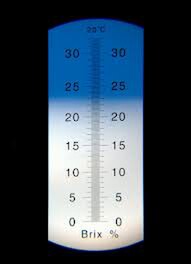
Brix is established as a mandatory regulatory standard for internal quality grading in specific high-volume fruit categories. Government agencies or industry associations assign official grades based on minimum soluble solid thresholds for crops like cantaloupe and watermelon, thereby guaranteeing a baseline quality level for consumers.
The utility of Brix extends throughout the entire production cycle, influencing critical decisions such as optimal harvest timing, grading, and processing controls. Brix provides a highly objective, inexpensive, and immediate estimate of sweetness, maturity, and processing viability.
How is Brix measured?
The concept of Brix measuring and the scale used originated in the mid-1800s with Adolf Brix. Adolf Brix developed the scale using a hydrometer and was initially measuring the sugar content of grape juice for use in wine making. Though it still works to measure Brix, the hydrometer is a tool requiring precision, has many moving pieces, and is not suited for use in the field where growers need to measure Brix. Today, Brix testing is most commonly done using a refractometer.
A refractometer works by measuring how much light bends when it passes through a liquid. This "bending" or refraction changes depending on what's dissolved in the liquid, like sugar. The denser the solution, or the more TSS like sugar in the juice of a fruit, the more the light bends.

Refractometers can take a few different forms. In laboratory settings they are often stationary units that allow for multiple samples to be prepared and loaded for testing. Growers and fresh produce quality checkers will often use portable manual or digital refractometers.

Refractometer steps:
Refractometers generally follow the same steps to use whether the results are manually read or digitally displayed.
- Extract the juice: First, you need a few drops of juice from the fresh produce.
- Light passes through: You place the juice on a small glass plate on the refractometer. When you hold the device up to a light source (like the sun), the light travels through the juice and into a special lens.
- Bending the light: The sugar and other dissolved solids in the juice cause the light to bend at a specific angle. The more sugar there is, the more the light bends.
- Reading the scale: Inside the refractometer is a scale. The bent light creates a shadow or a line on this scale, and where that line falls indicates the Brix value.

How is Brix data used?
Brix testing will impact decisions about packing, shipping and sales as Brix° degree measures are used in the grading processes of many fresh produce items. Standard acceptable ranges for specific crops and grades are typically set by governmental inspection agencies like the US Department of Agriculture (USDA) or the Canadian Food Inspection Agency (CFIA).
Brix testing will also greatly impact logistic decision making about harvest timing, storage and processing. Sugar levels are a contributing maturity and taste factor, informing how long produce will store or whether it will be too sour to be eaten fresh and should be sent for processing. In this section we will briefly outline how Brix° levels impact several example crop types.
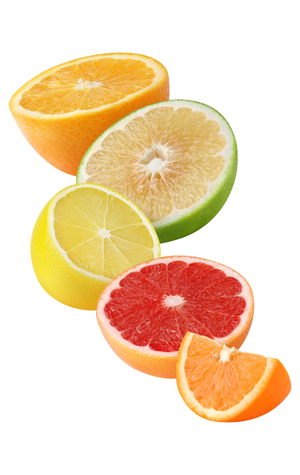
Citrus:
Citrus fruits are non-climaratic, meaning once picked, they will no longer develop sugars and the Brix levels will not increase during storage. Citrus is high in acid, making a Brix reading alone unreliable for determining acceptable levels of sweetness/tartness. Acid and Brix ratios must be sampled to determine the appropriate market. For example, oranges must meet a brix level of 10.5° to become unsweetened juice. These standards help ensure consistent taste for consumers.
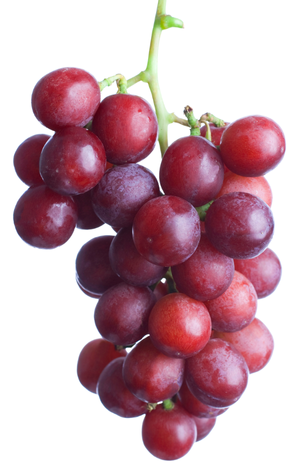
Grapes:
Grapes, particularly those destined for winemaking, represent one of the oldest uses of Brix measurement. Brix measurement is a key element of quality assessment throughout the winemaking process. Brix° levels are utilized to determine the optimum harvest time because the TSS content serves as the primary predictor of potential alcohol content after fermentation. For fresh market table grapes, high sweetness is highly valued, with preferred consumer Brix targets reaching 20°.
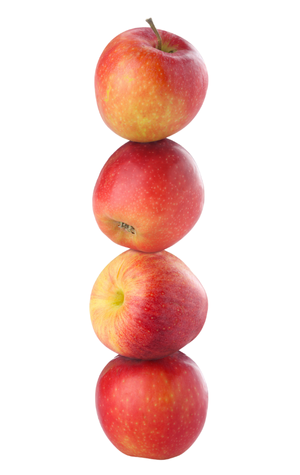
Apples:
For apples, the ideal Brix levels will vary depending on the variety. Predictably, tart apples like a Granny Smith will have a lower ideal Brix than a sweet apple like a Golden Delicious or Honeycrisp. On average, most apples are ready to eat when their Brix level is around 13°. However, apples are climacratic, meaning they will continue to convert starch to sugars after they are picked and will have a higher Brix levels if allowed to ripen.
To ensure apples are available year-round, they are often placed in long-term, controlled atmosphere storage facilities. This process drastically slows down the ripening to help them last. Leading up to and after harvest, growers test Brix levels along with other maturity indicators, like pressure and starch content, to determine whether the fruit will last in storage, should be packed for immediate sale, or is too mature and needs to be sent for processing. Monitoring Brix levels leading to and just after harvest will greatly impact storage and packing decisions for apples.
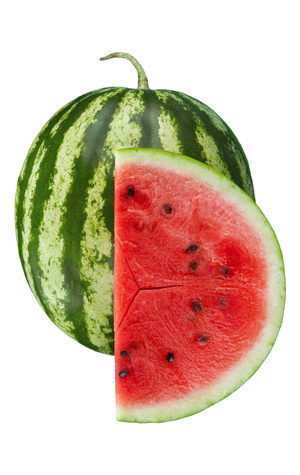
Melons:
Cantaloupe, honeydew and watermelon all have minimum Brix levels set by the USDA to meet standards for sale.
- Cantaloupe
- 9° minimum
- 14° ideal
- Honeydew
- 9° minimum
- 12° ideal
- Watermelon
- 8° minimum
- 10-11° ideal
Melons will be monitored in the field leading to harvest to make sure they reach acceptable levels to be sweet enough when they reach the customer.
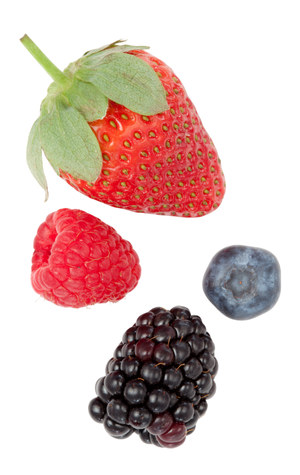
Berries:
In berries, Brix can vary significantly and generally only sweet berries are considered acceptable for fresh eating by consumers. For example, strawberries or raspberries ideal Brix range is from 12°-14°, when the sugar content is lower than this the berry is considered too sour and will be sent for processing into juice, preserves or dried products.
Like in apples, Brix is often used as a harvest timing metric for blueberries. Monitoring Brix can indicate environmental stress. While sugars accumulate during ripening, cellular respiration constantly consumes these soluble sugars and converts them into acids, predominantly citric acid. Warm day and night temperatures accelerate the respiration rate. Blueberries harvested during warmer periods tend to have lower Brix values and higher acid content, leading to a sourer berry. Growers will monitor Brix and upcoming temperature forecasts to try and schedule harvest at the ideal time, allowing the berries to grow as much as possible on the bush without losing quality.
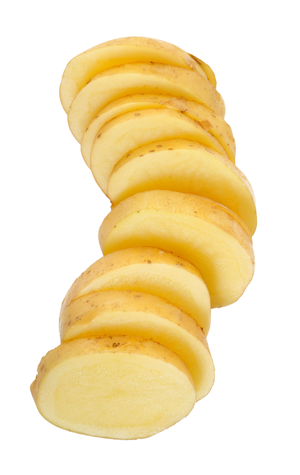
Potatoes:
While Brix is overwhelmingly used to measure sweetness, sometimes sweetness is not the goal. Potatoes provide the clearest example of Brix functioning as a negative predictor of quality defects rather than a positive measure of sweetness. For raw potatoes destined for processing into high-heat products like French fries and chips, the industry actively seeks a low Brix reading, typically under 5°. Higher sugar levels in a potato means it is more susceptible to browning when heated and will not cook properly.
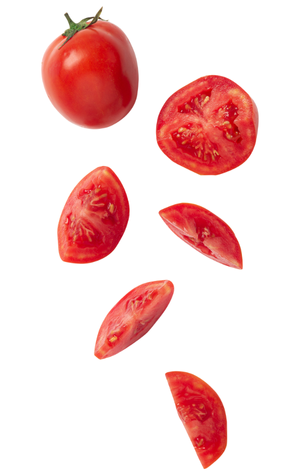
Tomatoes:
Tomatoes have different brix standards depending on their intended use. For processors making tomato paste or sauces, high Brix means there are more solids in the tomato and it will take less time and energy to reduce the liquid content. For fresh eating tomatoes, there is a broad range of standard Brix levels depending on the variety, growing region and consumer preference. Fresh market tomatoes measured in locations like Florida typically exhibit a low range of 4.1° to 5.3°, although sweeter types like cherry tomatoes can reach 5.0° to 8.0° Brix. However, the preferred consumer taste target for high-flavor tomatoes is significantly higher, around 12°
Brix° measure limitations
Brix readings are a good way to measure the total amount of sugar in a fruit, but they don't tell the whole story. You can't just use Brix to know if a fruit will taste good or if it's healthy. It's only one piece of the puzzle and should be used with other tests.
One of the biggest mistakes people make is thinking a high Brix number means a fruit will taste really sweet. For example, a lemon can have a high Brix level due to a high level of TSS, but it is only partially made up of sugars, there is also a high acid content. Just because a fruit has a high Brix doesn't mean people will like the flavor. Acids can make a fruit taste very tart, even if it has a lot of sugar.
Brix readings also vary a lot, even within a single lot of fruit. Brix levels will vary depending on temperature, where the fruit is grown, how much sunlight it was exposed to, ect. It is useful to vary sampling and monitor Brix from various areas of the growing area before harvest and track Brix rates over time. Standardizing and recording Brix° readings in an organized and easily reportable format goes a long way to help view Brix in conjunction with other necessary quality metrics like.

Brix is an indispensable tool in modern agriculture, providing a quick, objective, and cost-effective way to gauge the maturity, quality, and processing viability of fresh produce. From field to fork, monitoring Brix levels helps ensure a consistent and desirable product for both consumers and processors. By understanding its strengths, like its use in quality grading and harvest timing, and limitations, like its inability to tell the whole story of a fruit's flavor, growers and distributors can make smarter decisions, ultimately reducing waste and improving the overall value of their crops.

